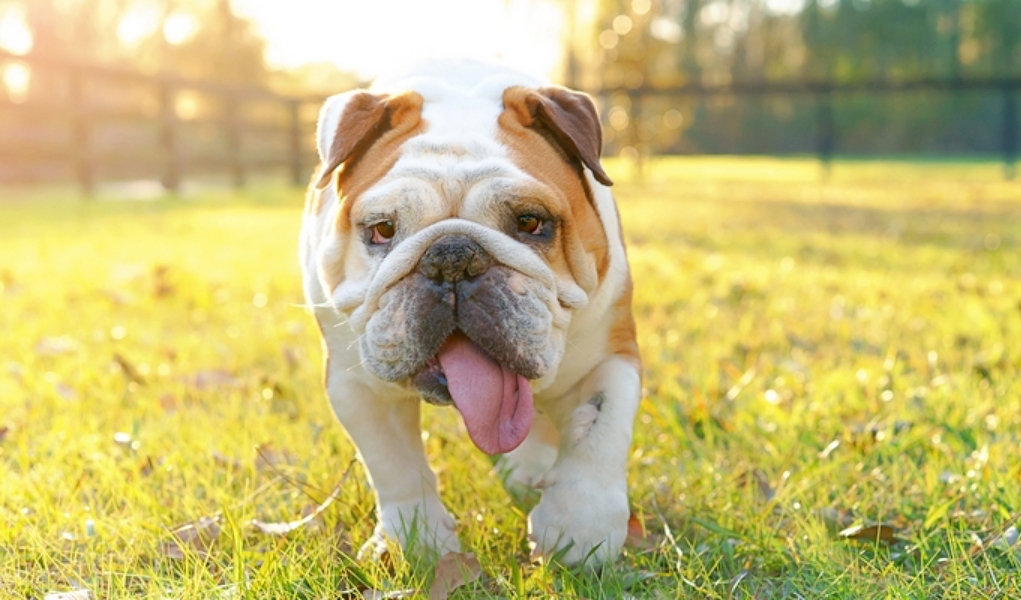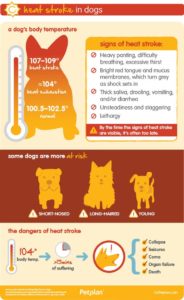Dogs need exercise and mental stimulation to be healthy, and this is best done outdoors. In the summer months it can be difficult to give your dog the exercise he needs because of the extreme heat. You may be wondering how hot is too hot for a dog?
Not all dogs are created equal. A temperature that feels comfortable to one dog might send another dog searching for a place to cool down. Some breeds like Chinese Crested and Australian Cattle Dogs are better suited for warmer climates, but no current domesticated breed can handle extremely hot weather for a prolonged period of time.
Just like us, dogs can get too hot and develop health problems if they aren't properly cared for. There are a few ways to know how hot is too hot for a dog. Consider the following if you're going outdoors with your dog during the summer time and you're concerned how your dog might react to the hot weather conditions.
How Hot Is Too Hot for A Dog?
Consider Your Dog's Situation…
If you're trying to determine how hot is too hot for dogs to be outside in summer, there are two areas to consider – your dog's personal situation, and the environmental factors. Here's what you need to consider to ensure your pup's safety:
1. Coat Color
On sunny, warm days, dogs with brown, black, or other dark colored coats are able to absorb more heat from the sunlight. Dogs with darker coats will overheat more quickly than dogs with lighter colored fur.
2. Coat Type
Dogs with thick, multi-layered coats will also get overheated more quickly than dogs with thin, fine coats. For example, breeds like the Alaskan Malamute and Siberian Husky are usually bred in Northern climates. They have thick, warm coats to help prevent them from getting cold quickly. These dogs have genetic, behavioral, and physiological attributes and advantages that allow them to thrive in colder weather conditions – which is a huge disadvantage during warm summer months.
3. Weight and Facial Structure
Overweight dogs struggle with many things. Dealing with the heat is no exception. There are many reasons to put your overweight pooch on a diet, and this is just one of them. Fat insults the body, which means the more overweight your dog is, the more quickly he will become overheated and the more difficult it will be for his body to cool down.
Facial structure is another physical feature that will affect how your dog reacts to the heat. Brachycephalic dog breeds (breeds with scrunchy noses) have a harder time breathing when it's hot outside. These breeds are more susceptible to heat-related illnesses as well.
4. Age and Current Health
Healthy dogs in the adult age range are able to regulate their body temperature fairly well and will not suffer from as many consequences as other dogs when the temperatures climb. Young dogs and puppies, old senior dogs, and dogs with health problems such as respiratory diseases will have more issues regulating their body temperature, and will suffer through hot weather much worse as a result.
6. Conditioning
Simple conditioning for specific temperatures is one of the most important factors. When a dog is used to warm temperatures, they are able to handle the temperature much easier. A dog from California will have a much easier time in the heat than a dog from Alaska. Also, when summer first begins, your dog will probably have a harder time adjusting to the weather. Later on in the summer, most dogs will be able to handle it a bit easier.
MORE: DIY Dog Ice Lick for Hot Summer Days
 How Hot Is Too Hot For A Dog?
How Hot Is Too Hot For A Dog?
The human body is programmed to cool itself through sweating, but dogs don't have the same ability. Instead, dogs pant. This allows their bodies to circulate air for a cool-down.
However, when temperatures become too extreme (100° F and up), panting cannot dissipate heat quickly enough, and the danger of heat stroke creeps up. Multiple studies show that the treatment for dogs that suffer from a heatstroke is complex, expensive and not always successful.
Other studies show that heatstroke in dogs results in serious complications and a near 50% fatality rate despite appropriate treatment. The higher the dog's temperature and the longer it takes for them to get treatment, the worse the outcome will be.
As a general rule, as long as you provide your dog with fresh, clean water, shade and air circulation, most dogs will be okay in temperatures up to about 90˚F. This isn't a hard and fast rule. In fact, there is no definitely answer to the question how hot is too hot for a dog.
 Never leave your dog outside in the heat for any period. This is a common cause of heat stroke in dogs. Sadly, many dogs have died from extreme heat. This means that “outside dogs” should be brought inside or given temperature controlled accommodations. This also means that potty visits should be kept short and dogs should not be left outdoors to play.
Never leave your dog outside in the heat for any period. This is a common cause of heat stroke in dogs. Sadly, many dogs have died from extreme heat. This means that “outside dogs” should be brought inside or given temperature controlled accommodations. This also means that potty visits should be kept short and dogs should not be left outdoors to play.
Even in the shade, a dog can quickly overheat. Your dog’s natural body temperature is around 102˚F. As it gets warmer outside, it gets harder for him to lower his body temperature. Once the outdoor temperature reaches a dog's internal temperature, there is no way for him to cool down at all, and he will quickly succumb to heatstroke.
When it’s hot or humid, do not push your dog to exercise. It’s harder for him to cool down in hot and humid temperatures, so he's much more likely to overheat. Also, limit the time you exercise or play with him outside.
Short walks outside for potty breaks should be fine. Just be sure to head back inside where it's cool as soon as your dog is done doing his business.
Overheated is a term used when your dog's body temperature raises above 103˚F. If his body temperature rises to 106˚F or higher, he is at risk of suffering heat stroke. This could lead to irreversible damage.
As they say, an ounce of prevention is worth a pound of cure. The best thing you can do to ensure your dog's safety when the mercury rises is to keep him cool and out of the extreme heat.
READ NEXT: 35 Summer Adventures for Dog Owners













